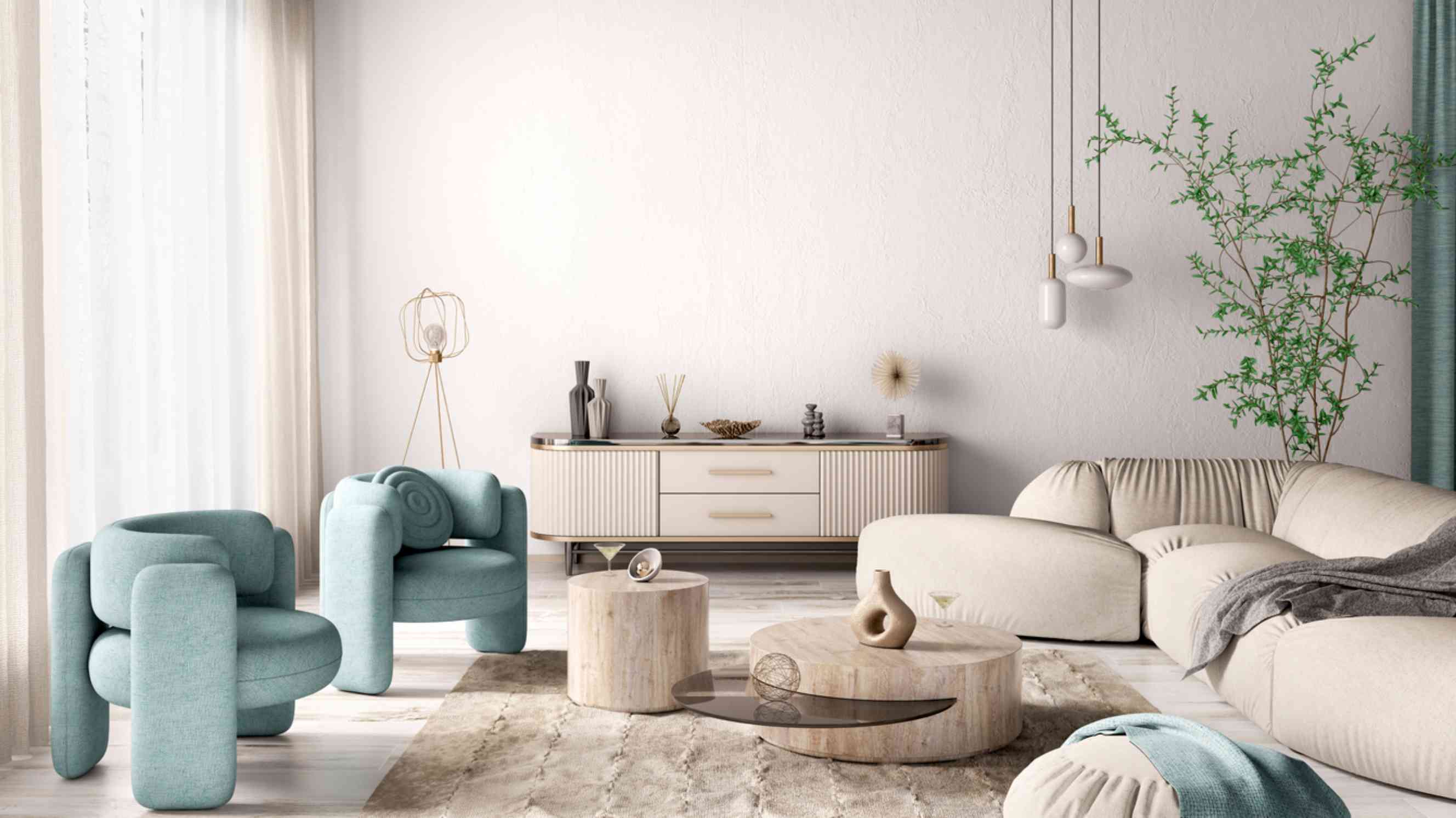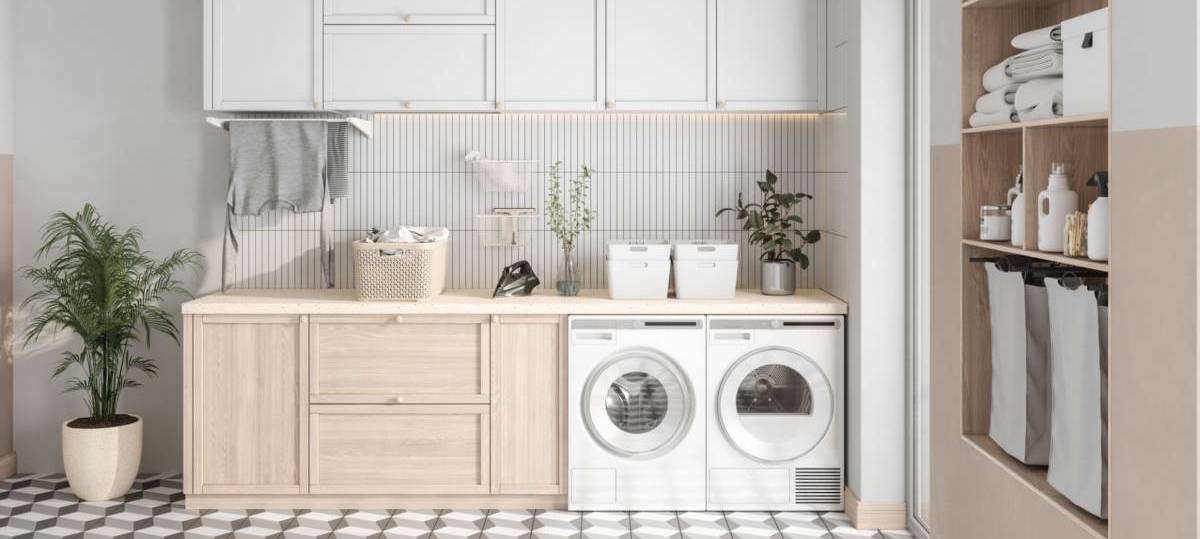- Home/
- Comparisons/
- Bedroom Designers/
- Comforter vs. Duvet
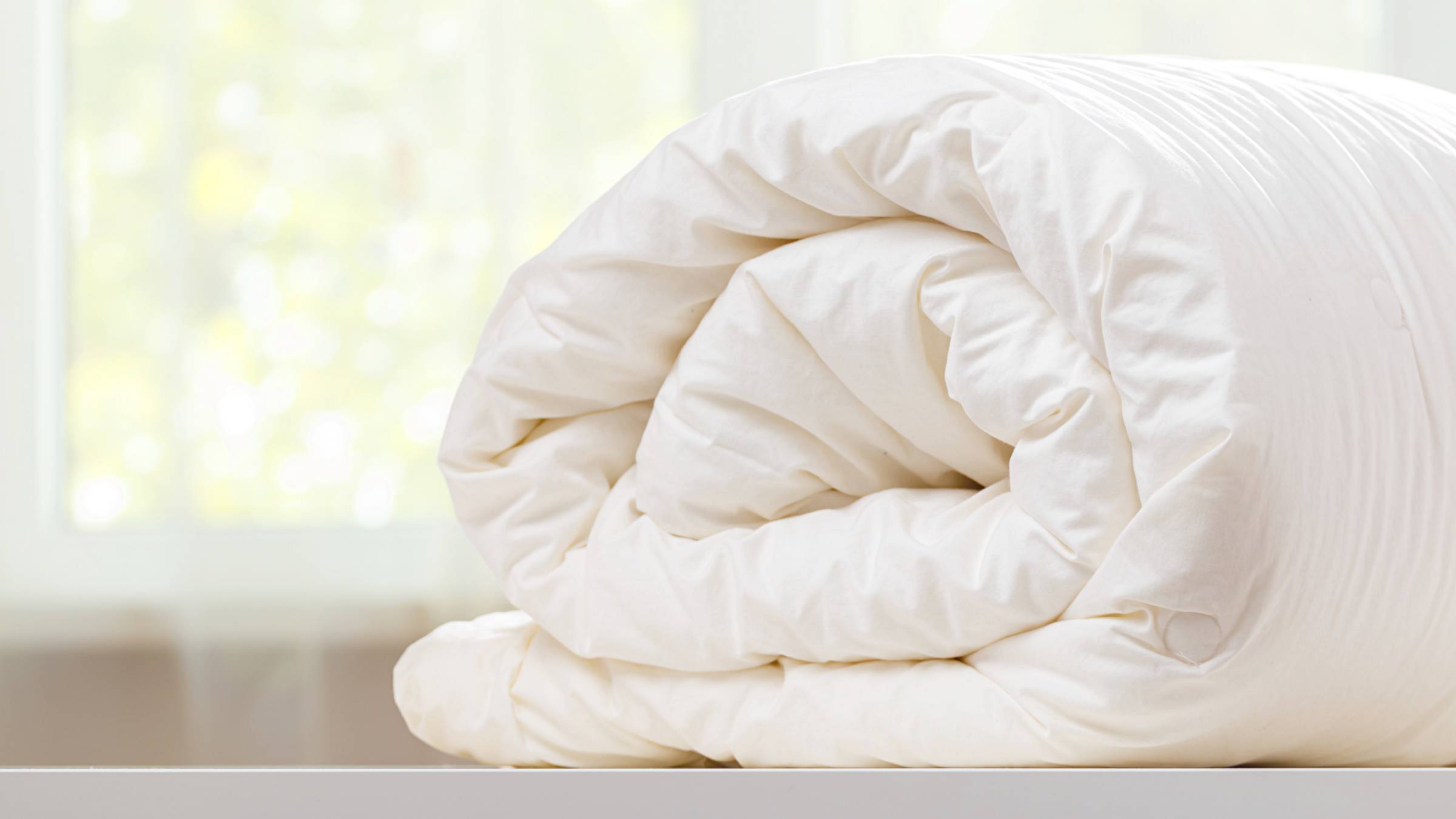
Comforter vs. duvet: Which is better for your bedroom?
Comparing comforters and duvets based on cost, cosiness, and more
Hire a bedroom designerLast Updated on
Key Facts
- A comforter is a quilted blanket filled with insulation like down, feathers, wool, or synthetic fibers used as a top layer on beds to provide warmth.
- A duvet is a two-part bedding system consisting of an inner fill layer quilted into a removable outer cover, designed to replace top sheets and blankets for warmth.
When prepping for bedtime, which bedding blanket is better for beauty rest: a puffy comforter or billowing duvet? The choice is not always clear. These blankets seem similar, cocooning you in cozy warmth against the cool night air. But this comforter vs. duvet guide shows they have differences that matter.
This primer lays out an A-to-Z comparison, looking at the advantages and disadvantages of each option. If you are caught between a comfy comforter or a cushy duvet, read on!
What is a comforter?
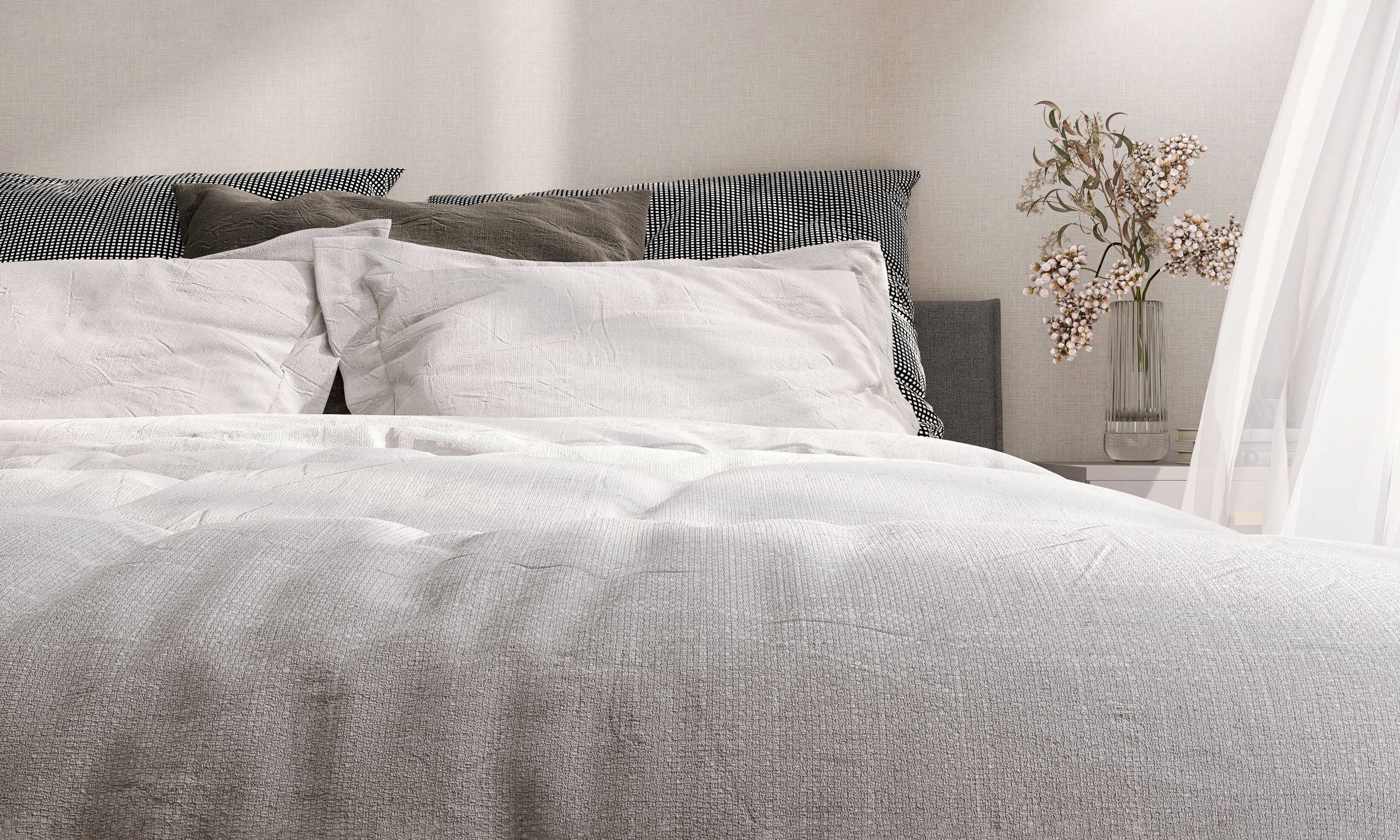
A comforter is a billowy, quilted blanket used as a top sheet on beds. It has three layers:
A decorative top fabric
A fill or insulating middle layer, which can be synthetic fibers, such as cotton blends, or organic materials, like down feathers from geese and ducks
Backing bottom fabric
The stitching holds these layers together and creates compartments that distribute the fill evenly throughout the comforter. This prevents clumping or shifting.
Tight, tiny stitches create the quilted boxes along the comforter surface. This meticulous stitchwork keeps the fill securely in place within each compartment. Meanwhile, edge stitching neatly finishes the outer seams and prevents the internal fill from leaking. Double- or triple-sewn seaming creates durable edges.
What is a duvet?
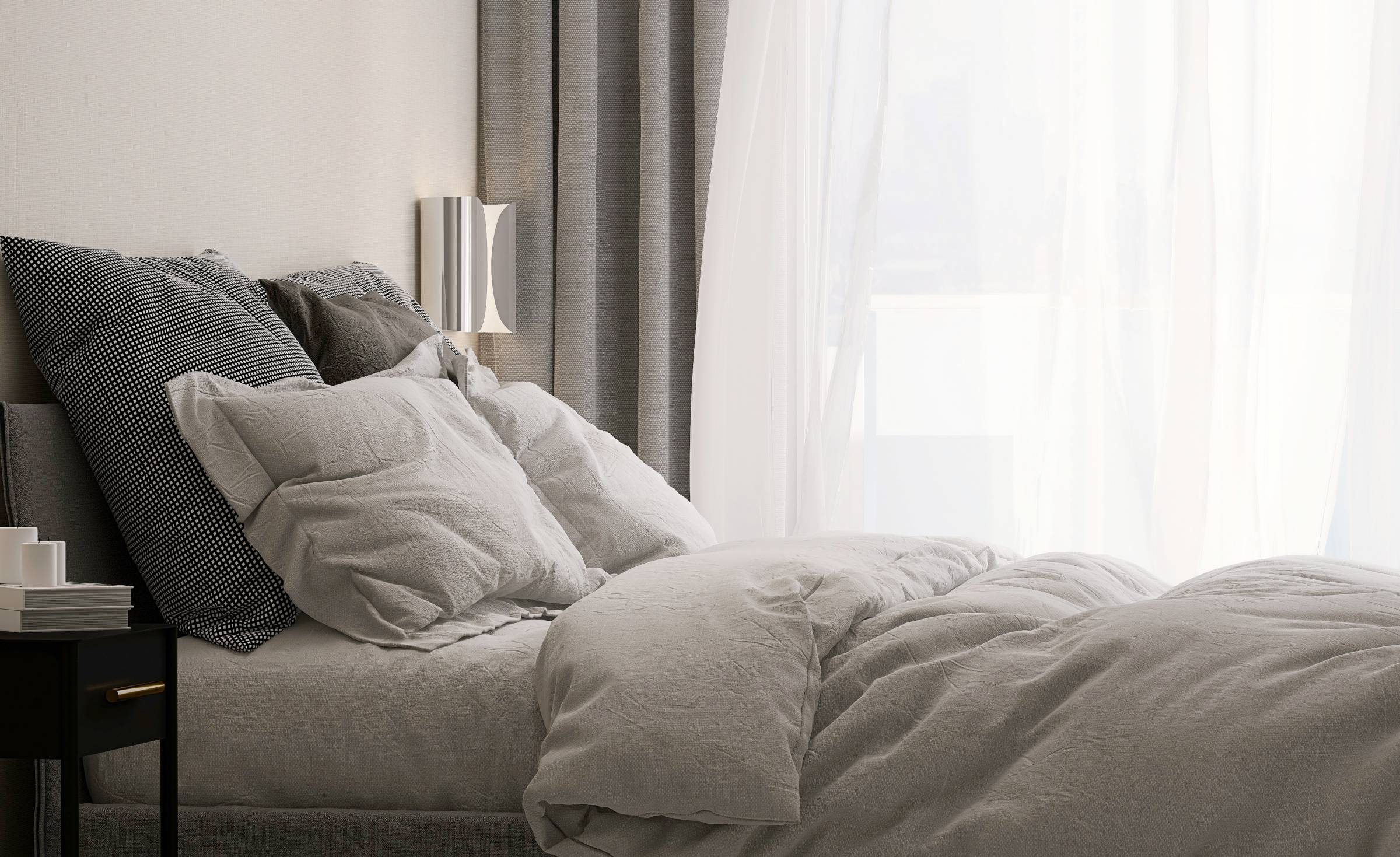
A duvet is a type of bedding that originated as a French word meaning “down.” Today, duvets are popular fluffy quilts used as alternatives to top sheets and blankets.
The key component of a duvet is its inserts. These are the inner layers providing warmth through insulation. They are typically filled with down feathers, down alternative fibers, wool, or cotton batting. Like in comforters, the fill material is stitched into small quilted pockets evenly across the duvet insert to prevent shifting.
What is a duvet cover? It is an outer protective layer that slips over the insert. Duvet covers are usually made from cotton, linen, or silk materials.
Duvet vs. comforter: Which is better for your needs?
Both duvets and comforters are warm and inviting, but this is not the only factor to consider when renovating or designing a bedroom. So should the cost, design, and more. Choose wisely with this comparison guide.
In terms of cost
Hands down, comforters are cheaper than duvets as far as price points are concerned. Retailers also sell them as a single piece or with bedding sets that already include a top sheet, pillowcases, and fitted sheets. In a way, you get a better value for money.
Duvets, on the other hand, need a cover and insert to function optimally. Duvet inserts also use higher-quality filling materials or wool batting to make them thicker and fluffier than comforters.
Other cost factors are size, materials used, and added features like corner ties. But in general, the more complex design of duvets makes them a pricier bedding option than comforters.
In terms of appearance
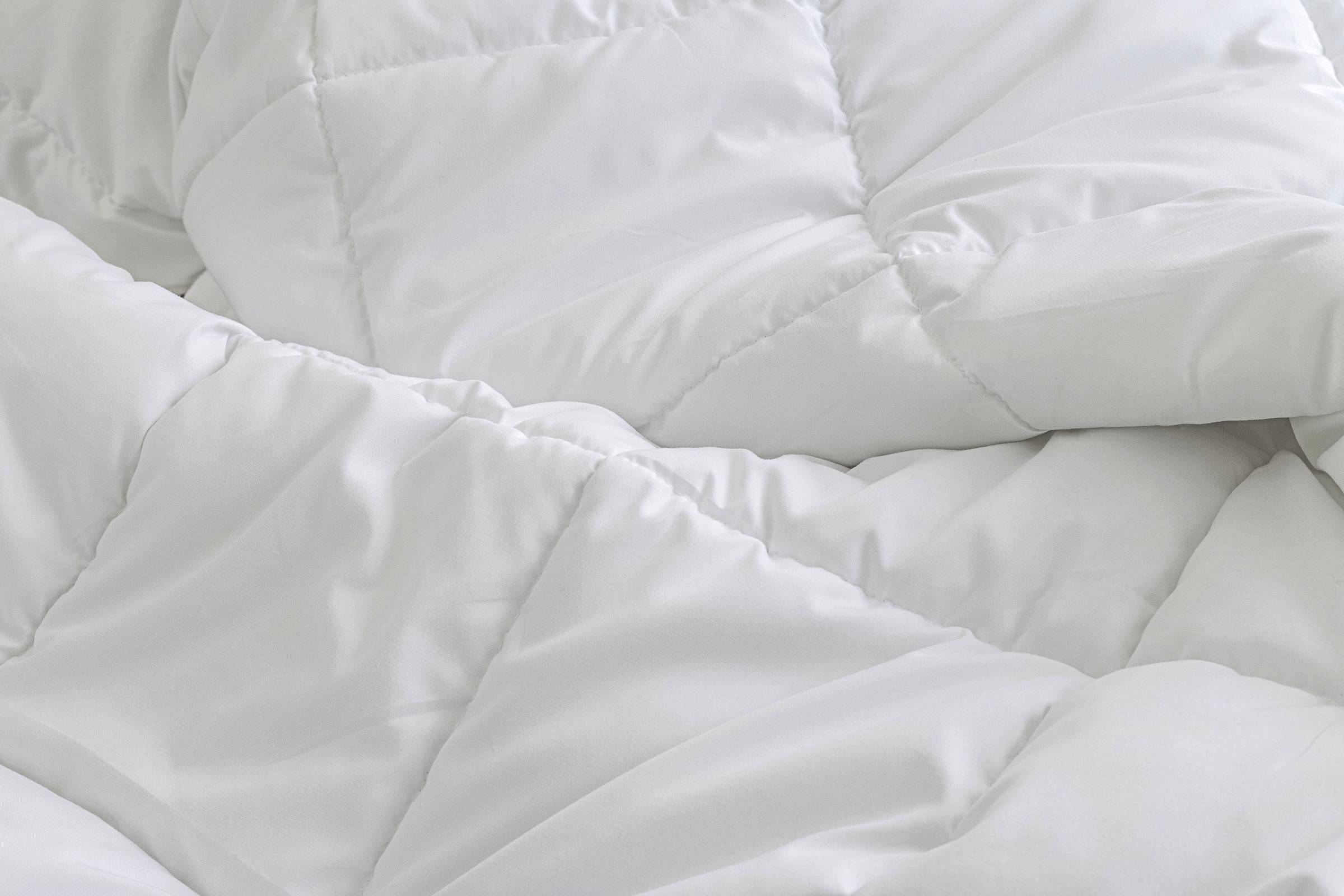
Both duvets and comforters can share similar stitching and quilted patterns. These can include diamond, square, or floral. Duvet designs can be flexible in various ways. For instance, changing out the cover allows you to switch up your bedding style easily. Duvet covers also often have buttons or tie closures to secure the insert.
Using a comforter gives you a layered look. It requires additional sheets or extra blankets because it is flatter and thinner than a duvet. Comforters are also bigger, which means they can fall nicely on the sides of the bed. They often come with similar-looking sheet sets if you want cohesive bedding items.
In terms of coziness

Regarding warmth and coziness, both duvets and comforters have their merits but achieve them differently.
Comforters provide lighter, basic warmth on their own. The extra sheets are handy in increasing insulation. On the other hand, duvets offer better stand-alone warmth because of their construction. The insert is kept extra thick by the quilted compartments holding the fill in place. Higher fill power options, like down and wool, provide excellent insulation. The outer duvet cover adds extra thickness and another layer to trap heat.
The fill materials also impact warmth. More comforters now use cheaper synthetic fibers that don’t insulate as well. Meanwhile, premium duvets have down or wool fill options. Goose down, in particular, has an unbeatable warmth-to-weight ratio.
Regarding pure coziness, duvets sometimes win out due to their billowy, cloud-like thickness. Many people find that the enveloping feel of a fluffy duvet provides ultimate comfort and sleep hygiene. Comforters give more of a simple hugging warmth.
In terms of care requirements
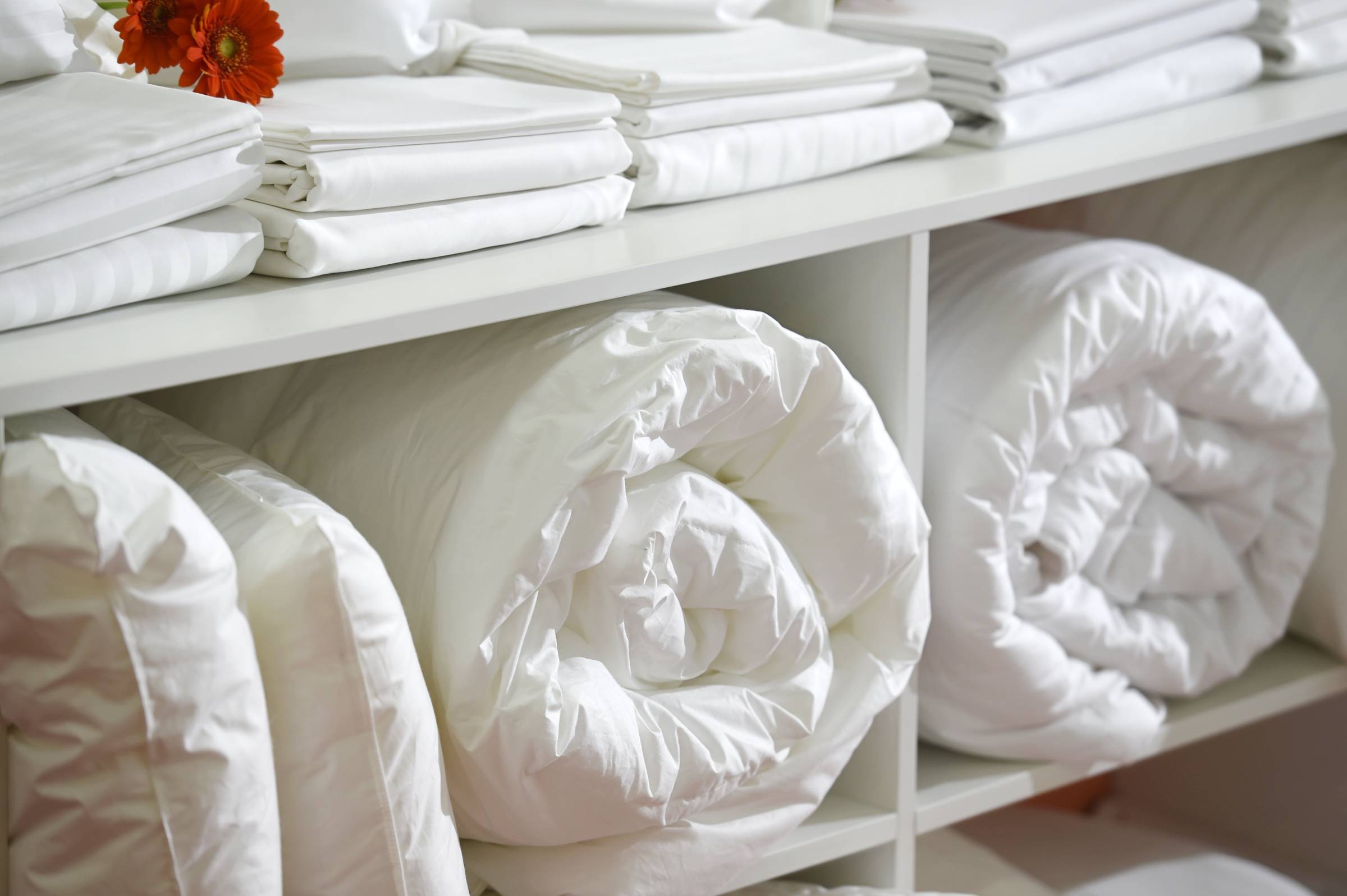
The difference between a duvet and a comforter also lies in their care and cleaning requirements.
Duvets have a major advantage with their removable cover, which protects the inner duvet insert. They are easy to remove and are typically machine washable. The insert only needs infrequent dry cleaning or airing out.
Comforters don’t have this protective barrier, making cleaning laborious and expensive. Almost always, you need to have them dry-cleaned or professionally laundered. Otherwise, you need to invest in a top- or front-loading washer with a drum capacity of at least five cubic feet to clean a king-sized comforter.
Whether you have a duvet (with its cover) or comforter, it needs cleaning and sometimes changing every two weeks.
In terms of bed-making impact
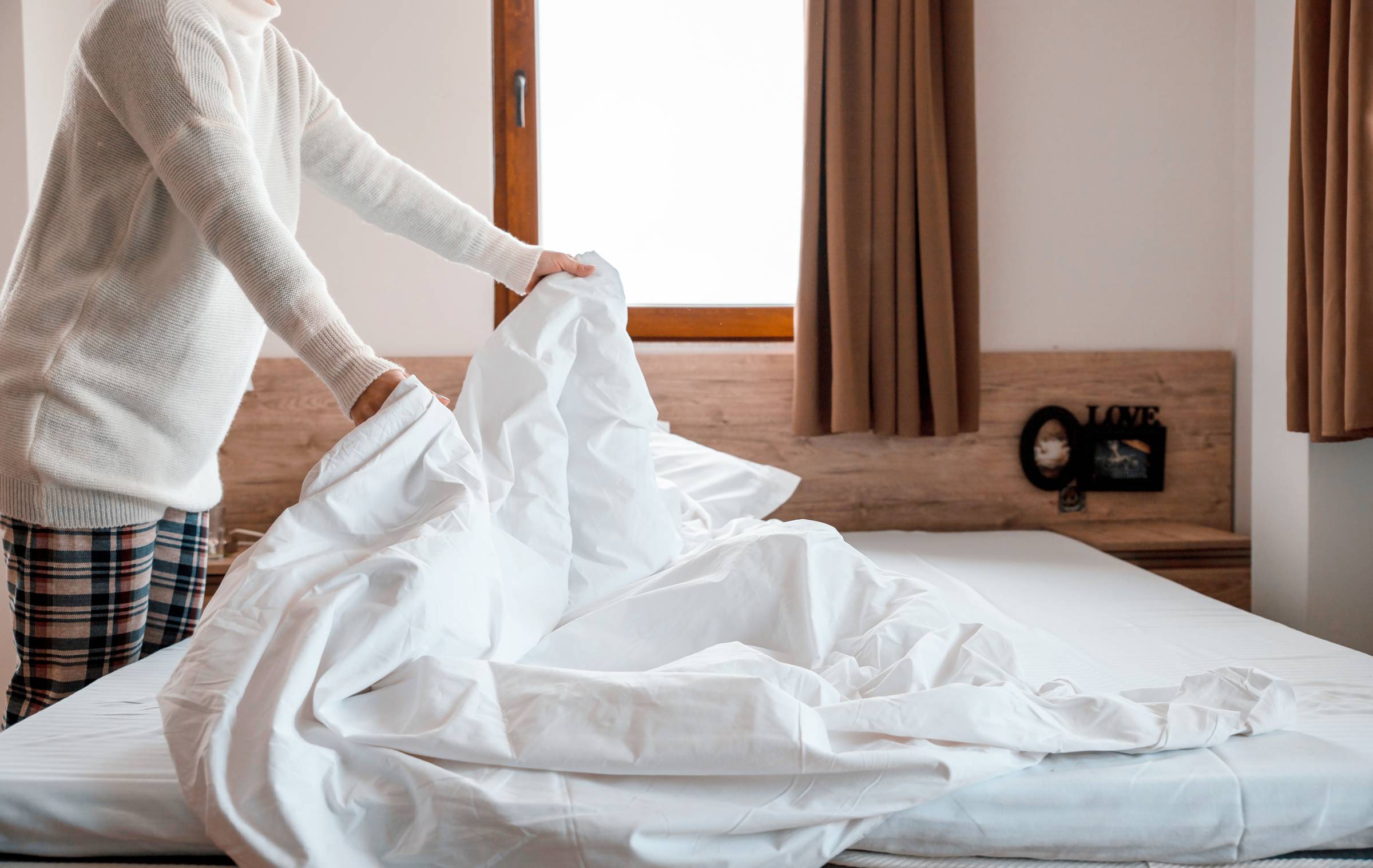
Another main difference between these two is their bed-making impact. Which is better when your head is ready to hit the pillow?
As a single covering, comforters are easier to deal with. You just have to remove them from the packaging and lay them flat on the bed above the top sheet.
In contrast, duvet covers can make changing or setting up the bedding longer, especially with tie or button closures. Zippered ones are more convenient. They might also be made of linen or silk, which are prone to wrinkling.
In terms of seasonality
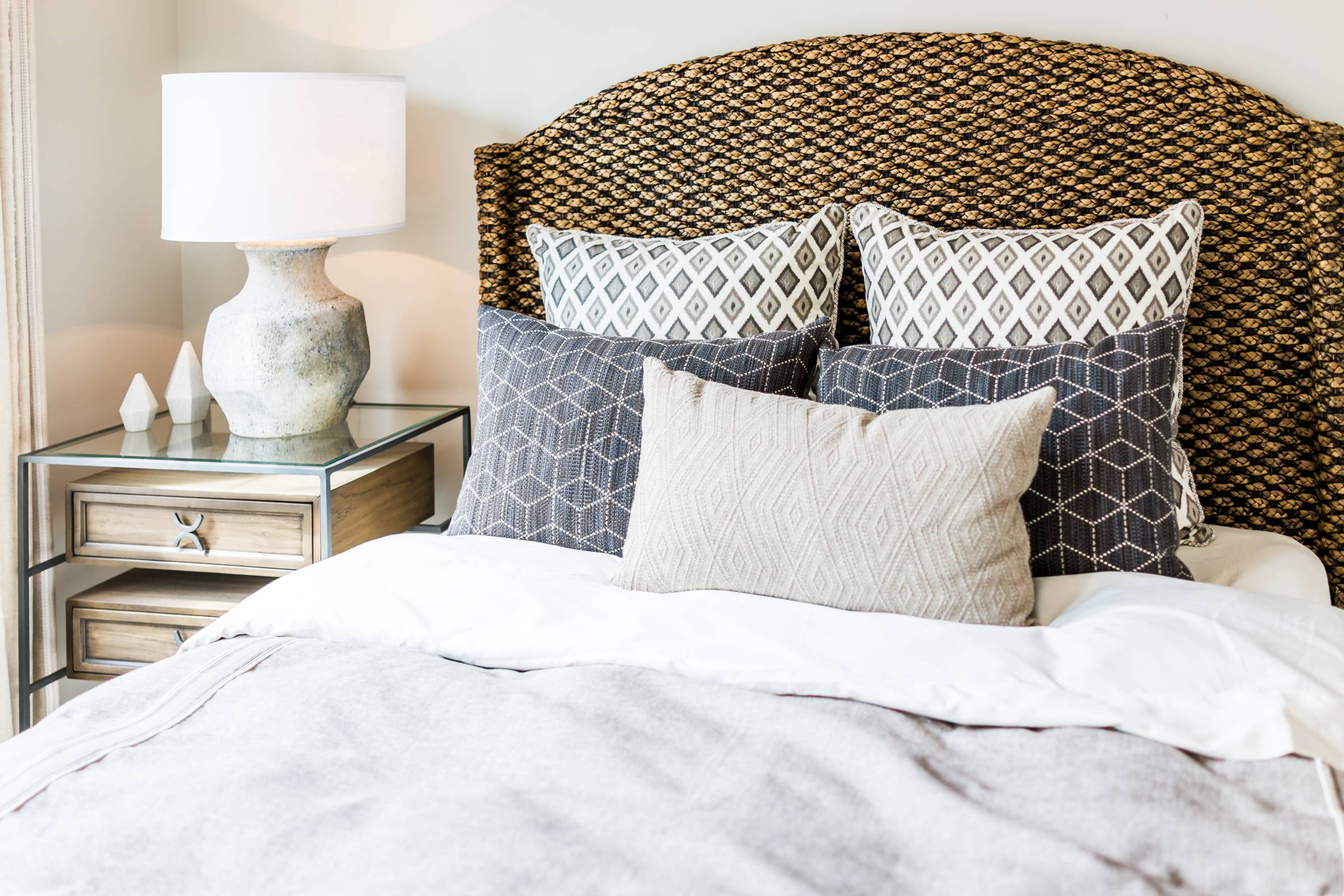
Comforters are year-round bedding. In warmer months, lightweight ones work well on their own as a top-sheet replacement. Come colder weather, you can add blankets or quilts for a layered look.
Duvets provide versatility through their removable covers. You can switch between warm and cool ones to suit the season. A lightweight cotton duvet cover is perfect for the summer, while a wool or flannel cover is a must-have in winter. The inner insert stays the same, allowing one duvet insert to span all seasons with cover changes.
What’s better for the season also depends on their “thermal overall grade” (TOG) rating, which ranges from 2.5 to 15. The higher the number, the more insulated it is. Usually, those with a TOG between 2.5 and 3 are ideal for the summer. Anything over 12 is good for the frigid temperatures.
As for style options, comforters come in a wider range of colors, prints, and fabric types to match your existing sheets and bedroom style. Duvet cover sets often have a matching set of pillow shams and accessories to go with the overall bedroom design.
In terms of sustainability
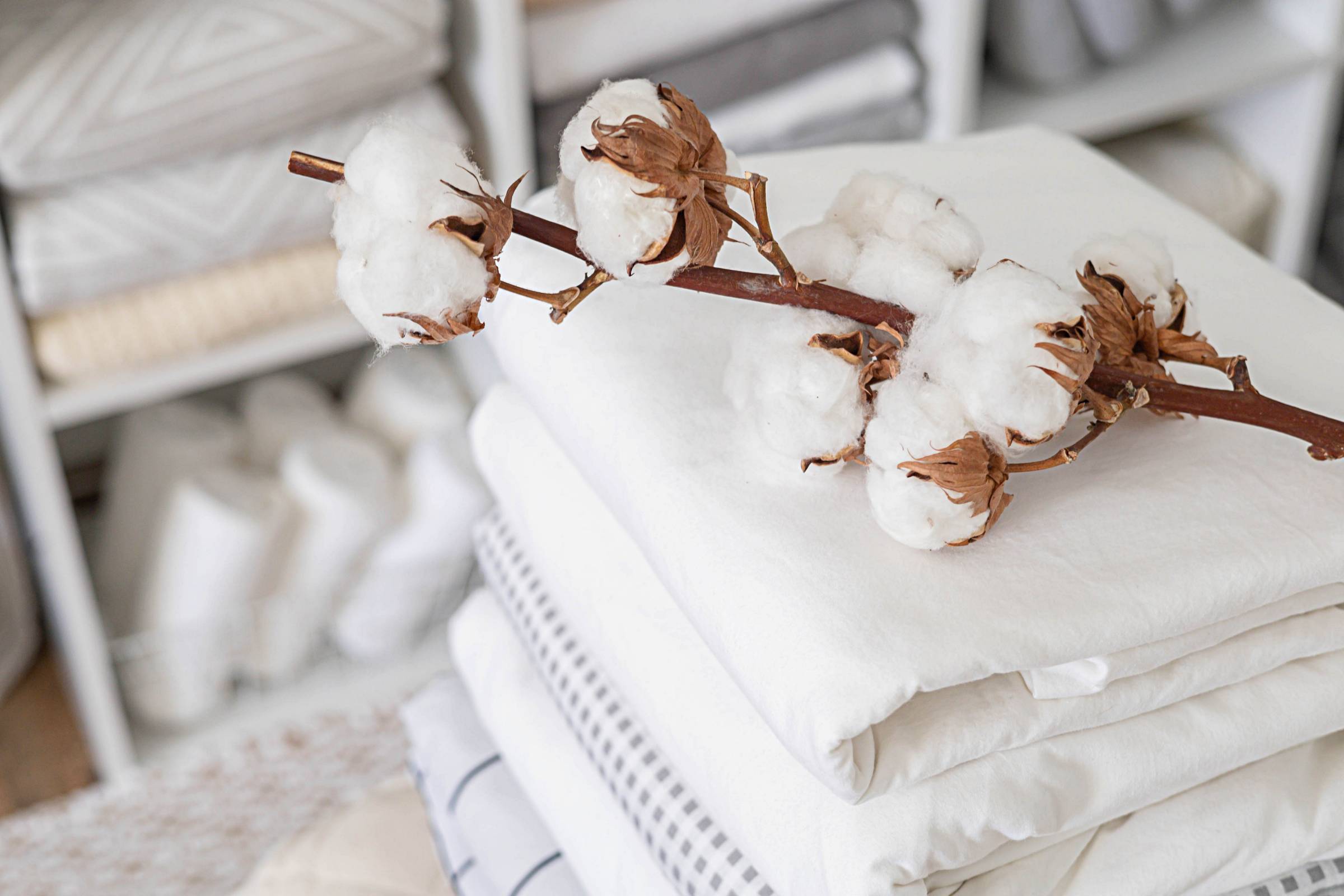
Duvets and comforters can be both sustainable (or not). It all depends on the material. The best and often premium brands use down feathers from geese or ducks that have been butchered for meat. However, some suppliers might engage in unethical and illegal practices like animal cruelty.
Synthetic fibers are practical and more affordable. You are also sure no animal has been harmed to make them. However, they can also break down into smaller pieces and pollute the environment.
Achieve your dream bedroom with Airtasker

Performing a room makeover to create that dream oasis is thrilling. And choosing the right bedding is key. Should you opt for the cozy convenience of a duvet or the classic layering look with a comforter? With Airtasker, you don’t have to decide on your own. It lets you hire a style expert in only a few steps:
Create a free account on the website.
Post a task with a complete job description. Include essential details like your needed service, budget, timeline, and preferences.
Get quotes from nearby professionals, such as interior designers and home organizers.
Pick the one you like and seal the deal.
Enjoy coming home to a beautiful space ready to tuck you in with the bedding of your dreams. Compare duvets and comforters, and then use Airtasker to find local pros who can bring your bedroom makeover ideas to life.
Comforter vs. duvet
| Comforter | Duvet | |
|
Cost |
Cheaper, often sold as a matching bedding set |
More expensive, sold individually or with a cover |
|
Appearance |
Flat with designs that often match the rest of the bedding items |
Fluffier and more billowy, with interchangeable, designed covers |
|
Coziness |
Might require more blankets or quilts during the winter |
More insulated and cozier than comforters |
| Care Requirements |
Requires dry cleaning |
Requires less frequent cleaning or washing because of the duvet cover |
|
Bed-making Impact |
Easier to deal with because it is flat and placed on top of the other sheets |
Challenging because it is plumper and more prone to shifting |
|
Seasonality |
More flexible for the whole year |
Can be used year-round, depending on the TOG |
|
Sustainability |
Can be more water-intensive when washing or cleaning |
Can be more sustainable with the filling |
FAQs on comforters and duvets
Down and wool are the ideal fillings for comforters and duvets because they provide the best warmth for their weight and last for years when cared for properly. However, most comforters use cheaper synthetic fibers that are less insulating.
Follow the care instructions for your specific comforter or duvet, as washing frequency varies, although you usually need to change or clean the bedding every two weeks. However, a cover protects the inner duvet, so it needs less cleaning.
Yes, you can use both comforters and duvets year-round. Select the TOG and materials suitable for the season, like light, breathable cotton in summer and warm wool or down for winter.
The warmth rating is the main difference between a summer duvet and a winter duvet. Summer duvets have a lighter, lower TOG, and winter duvets have a heavier, higher TOG to provide more insulation.
Find bedroom designers, fast
Post a task
Related articles
Related price guides
